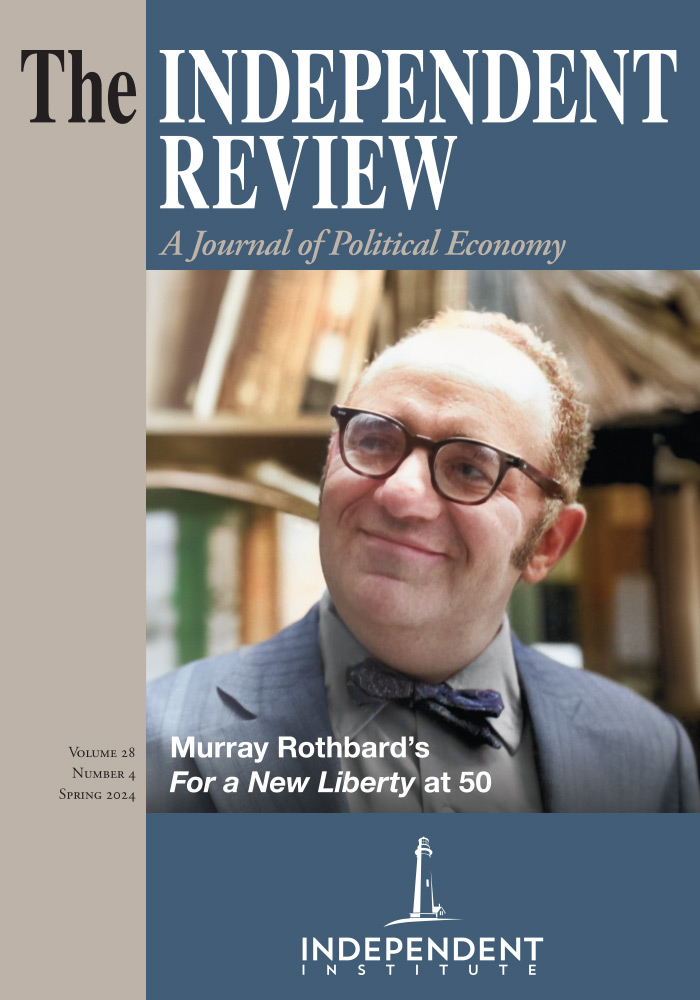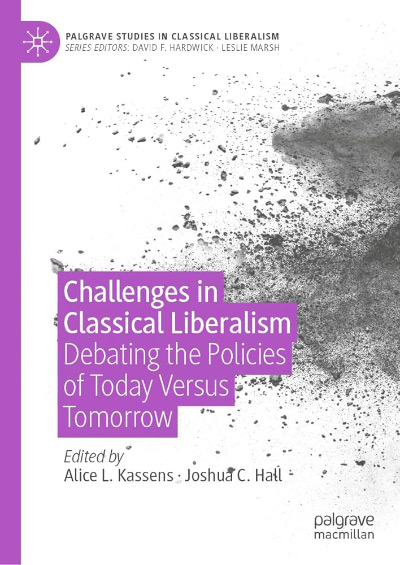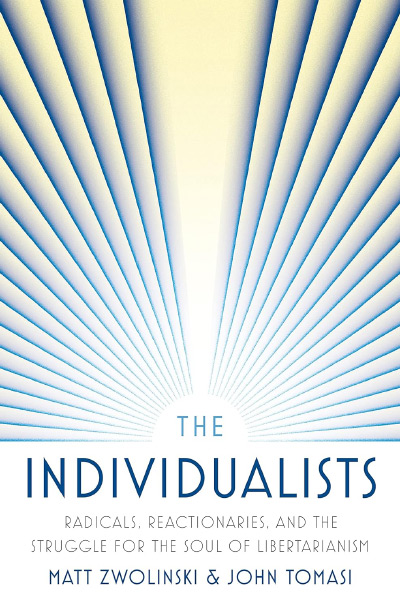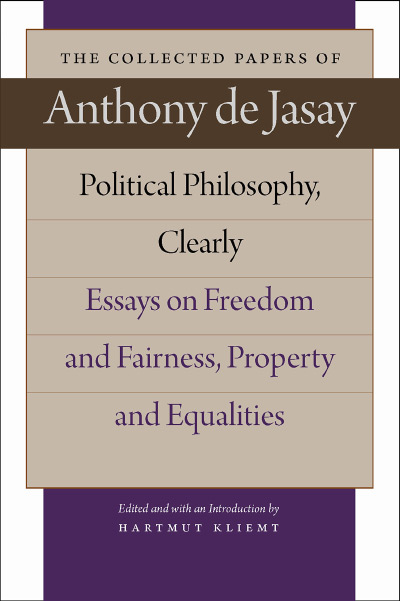In 1995 Philip Howard burst on the scene with The Death of Common Sense: How Law Is Suffocating America (New York: Random House). Unfortunately, the law is still suffocating America, so Howard has continued to diagnose the problem and search for solutions in a series of books over the past three decades. Everyday Freedom is the latest in this line. Its central argument is that our legal system fundamentally went off course in the 1960s. Seemingly benign legal reforms which were meant to protect people from arbitrary treatment by those in authority ended up stripping agency from legitimate decision makers. These legal changes perverted justice, eroded efficiency, and annihilated trust in American society and institutions. As Howard sees it: “Americans didn’t abandon our belief in individual responsibility. It was taken away from us by a post-1960s legal framework that, with the best of intentions, makes people squirm through the eye of a legal needle before taking responsibility. Individual responsibility to a broader group ... was dislodged by a new concept of what’s best for one person or constituency. The can-do culture became a can’t-do culture” (pp. 3–4).
“Freedom was reconceived as a concept of individual rights against anyone with authority” (p. 19, emphasis added), which stripped authority from those who needed to make sensible decisions, pushing them to justify every decision using prescriptive rulebooks that dictate the “one correct way” to do things. As there is not one correct way to do things and judgment is needed in complex and fluid situations, this shift was disastrous, as it empowered individuals to file lawsuits for any adverse outcome. The legal “rights” trump card denied the possibility of making reasonable tradeoffs. In the end, these changes didn’t protect people from arbitrary state power, they insinuated state power into everyday decisions and denied people everyday freedoms.
Howard argues that whether or not a legal framework is effective should be judged not so much by what it prohibits, but by what it empowers people to do—and ours often doesn’t empower people to do what we think is right. A legal system should consist of outer boundaries rather than be a thicket of rules. It should be a fence creating a large corral and defining a field of freedom. Individual rights are not supposed to be a sword against others’ freedoms, but rather a shield. However, “after the 1960s ... the shield of individual rights was transformed into a sword against decisions by other free individuals, particularly those with responsibility” (p. 44). As the belief in individual responsibility has eroded, we have come to exaggerate abuses of power, becoming outraged by minor injustices—we wallow in indignation and distrust.
Tweaking the legal system is useless, so Howard advocates that Congress should “delegate the design of structures, area by area, to independent recodification commissions. Then the proposals can be put to a vote by Congress, weighing the costs and benefits of the overall package. That’s more or less how new legal codes have been adopted throughout history” (p. 82–83). Unfortunately, and this is the greatest shortcoming of this pithy book, that is basically all he has to say. He does virtually nothing to flesh out this reform plan, which comes and goes so quickly that it is easy to miss. I would have liked an entire chapter on how to pursue this overhaul—how to move American law and American thinking to recast freedom and rights from the current warped version to one that gives us the freedom to do good rather than stripping people of their agency on the slightest pretext.
Most likely, you have seen this legal revolution play out in your daily life and on the job. For example, as a college professor, I have seen the Americans with Disabilities Act morph from something meant to help remove senseless impediments from those with genuine disabilities into a legal straight jacket that unfairly benefits privileged individuals and weakens education. At this point, students who are just as able as others receive special privileges—especially extra time on exams—with documentation by an expert that they have a learning disability. In my experience, some of the brightest, quickest minds in the class receive accommodations. About five percent of undergraduate college students nationwide are registered with their school’s disability office, but as reported by Tema Cohen, Sullivan Ray, Cassidy Audette, and Robert Weis, “Contrary to expectations, the highest percentage of students with disabilities receiving accommodations are found in America’s most selective and expensive private colleges and universities” (2020, College Students’ Access to Academic Accommodations Varies as a Function of School Type, Selectivity, and Cost, Journal of Education and Culture Studies, 4:3)—as if students at these elite institutions have more learning abilities. Who gets accommodations? Too often it’s students from wealthy families, whose parents know how to work the system and can easily pay for tests which almost anyone can “pass” (that is fail) if they wish to. My students have told me as much and numerous news outlets have published stories about the widespread tactic of claiming what Forbes calls “fake learning disabilities.”
Possibly the most jarring statement Howard makes in Everyday Freedom is that—partly because of these legal changes—“distrust has become a core American value” (p. 57). I hope this isn’t true. Have things gotten this bad? Howard doesn’t give numbers to complement this argument, but public opinion polls suggest that he is on to something. The U.S. General Social Survey asks people if they think that “most people can be trusted.” In the 1970s the percent responding “yes” averaged about 43 percent. That seems low (at least to me), but the number has dropped each decade and averaged only 32 percent in the 2010s. The Integrated Values Survey has asked the same question—do you agree with the statement that “most people can be trusted”?—since the 1980s in countries around the world. Here the US looks a little better, with 37 percent answering “yes” in 2022 and Americans are ninth highest among the people surveyed in sixty countries. However, the US is well below average among Western European nations and their offshoots. Our neighbors in Canada have much more trust in people (47 percent answer yes to the trust question), as do Australians (49 percent), New Zealanders (57 percent), Germans (45 percent), the Dutch (55 percent), and the British (45 percent). The figures cited in this paragraph are on display at Our World in Data, which also shows a strong correlation between GDP per capita and the share of people who agree that most people can be trusted.
Perhaps because of his background in the law and his aim of building a broad coalition, Howard is very narrow in his strategy for rebuilding responsibility and trust in American society. The push cannot be simply in the legal sphere, however. It must be much broader. Trust is at the center of our personal, social, and economic interactions, so to rebuild it we must push all margins. People trust when others are trustworthy, and they rarely simply decide to be trustworthy. Instead, they are raised to be trustworthy so that it becomes their default setting, and they don’t weigh the benefits of acting dishonestly against its costs. Trustworthiness must be inculcated at a young age. David Rose makes this argument in compelling fashion in Why Culture Matters Most (2019, New York: Oxford University Press).
If we are to regain our everyday freedoms, we need to put honesty and responsibility at the core of our legal, economic, political, cultural ... and ethical systems.
| Other Independent Review articles by Robert M. Whaples | ||
| Spring 2025 | Millennials, Gen Zs, Capitalism, Socialism, and Confusion | |
| Spring 2025 | Not Stolen: The Truth about European Colonialism in the New World | |
| Spring 2025 | Green Breakdown: The Coming Renewable Energy Failure | |
| [View All (106)] | ||



















